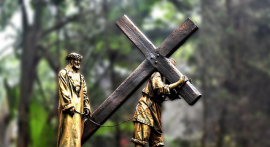
History was uncovered as the Israel Antiquities Authority (IAA) revealed the discovery of an ancient copy of the Bible on Monday, July 20. Charred scroll fragments that were excavated back in 1970 were a mystery to scientists for 45 years. Micro computed tomography (CT) scanning technology from the University of Kentucky enabled researchers to see that the fragments contained verses from the Book of Leviticus.
“This is a really big discovery. After the Dead Sea Scrolls, this has been the most significant find of an ancient Bible. We need to compare this material with on the one hand the Dead Sea Scrolls which is few centuries younger, at least four centuries if not younger- six centuries, and the Aleppo codex which is four centuries later,” said IAA curator Pnina Shor.
The scroll contains the first eight verses of Leviticus. The 2.7 inch scroll is dated 500 A.D. It was found by Sefi Porath and Dan Barag within a burned synagogue at Ein Gedi, Israel in 1970. The fragments were deemed “too damaged to read” because they were badly charred. Micro-CT scanning and digital imaging allowed for scientists to “virtually unwrap” the scroll and to “visualize the text.”
"The page actually comes from a layer buried deep within the many wraps of the scroll body, and is possible to view it only through the remarkable results of our software, which implements the research idea of 'virtual unwrapping,'” said professor Brent Seales, a member of the UK scroll research team. “We are delivering hope for revealing other lost texts, and a systematic, scientific blueprint for how to do it."
Porath and Barag found the scroll along with a bronze candelabrum, thousands of coins, glass, ceramic oil lamps, and perfume. Porath stated that the destruction of the synagogue may have been caused by Bedouin raiders or by “conflicts with the Byzantine government.” The synagogue is described to have had a “mosaic floor and a Holy Ark” during the Byzantine era.












